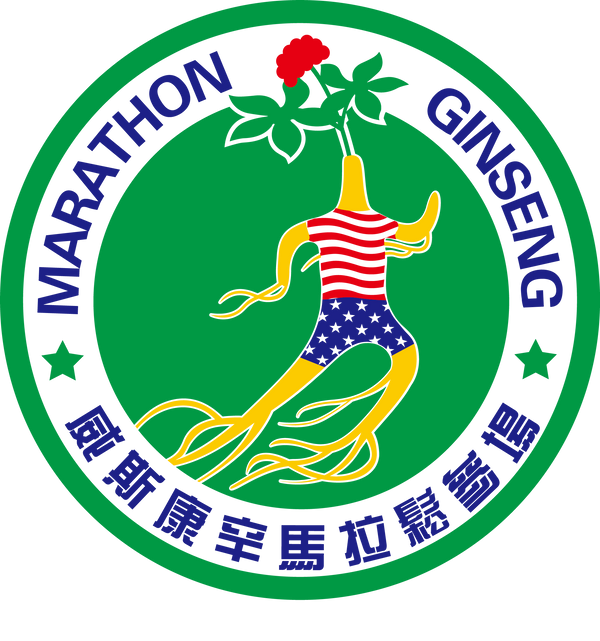"Xiyang" Ginseng, broadly referred to as American Ginseng (scientific name Panax Quinquefolium). Wisconsin ginseng farmers call it 'Shang,' which sounds similar to the pronunciation of ginseng in Chinese.
"Huaqi" Ginseng: A concept to distinguish American Ginseng originally from the U.S. and grown with American seeds in Canada. The former is called "Huaqi" Ginseng, referred to as American Ginseng while the latter is named "Xiyang" Ginseng.
As the saying goes, "Not afraid of not recognizing goods, but afraid of comparing goods." Today, let's compare American Ginseng produced in Wisconsin USA, to ginseng produced in China, and Canada.
To judge the authenticity of American Ginseng, we need to use the "Four Examinations" method in traditional Chinese medicine, which includes observation, smell, taste, and inquiry. These indicators should be considered together for a more accurate evaluation.
Characteristics of Wisconsin Ginseng (American Ginseng): It looks too old; smells too fragrant, but tastes too bitter.
To elaborate further:
-
Looks too old: It has excessive and deep wrinkles, both horizontal and vertical lines (larger wrinkles). The vertical lines are the result of dehydration after cold storage to convert starch into sugar, creating a strong "bitter-sweet" (aftertaste) sensation. Additionally, the color appears dull, mainly due to the fertile, dark soil in Wisconsin, and a thin layer of soil retained during processing. This combination makes it look particularly old and unattractive, while Canadian and Chinese ginseng is generally clean, with a lighter yellow (or white) color and a smooth surface, looking more appealing, but with a weaker aftertaste.
-
Smells too fragrant: How fragrant? When you open a pound of new ginseng, the aroma is overwhelming (rated nine out of ten). It fills the whole room and can keep you away from falling asleep.
-
Tastes too bitter: The local ginseng farmers call this "The Bite." Fresh Wisconsin ginseng tastes somewhat sweet with a weak aftertaste. However, after cold storage and drying, the bitterness dominates the taste. Testing method: Chew a small piece of ginseng branch and swallow it. The bitterness makes you want to spit it out, but it's followed by a strong aftertaste (bitter-sweet). The increase in saliva secretion (moistening) dilutes the bitterness. It can be rated nine or ten out of ten (one means no taste, ten means extremely bitter).
Only a few ginseng fields in Wisconsin do not undergo cold storage but rely on natural cooling due to weather. Some fields in Canada and China have started doing this.
The comparison below shows ginseng from China (left, counterfeit Wisconsin ginseng from an American online seller), Canada (middle, Ontario sample), and Monk Garden at the Wisconsin Mega Ginseng Farm (right). The color may be affected by photography and the display screen, appearing slightly lighter than the actual product.

Chinese Ginseng (left in the picture, from Northeast China) also has three characteristics: it looks smooth, smells slightly fragrant, and tastes sweet. Notice its surface is very smooth, and the color is slightly yellowish-white. There are not many deep horizontal lines, and no vertical lines, indicating that it has not undergone cold processing and dehydration, resulting in no aftertaste.
Canadian Ginseng (middle in the picture) has three characteristics: it looks beautiful (pale yellow and full), smells fragrant (rated six out of ten), and tastes quite bitter (rated six or seven out of ten), with limited and short aftertaste. It looks beautiful due to its large and full appearance, pale yellow color, and more horizontal lines, and sometimes even vertical lines (some sellers may use cold processing and dehydration). However, its taste is far less bitter compared to Wisconsin Ginseng. Its fragrance is somewhat pleasant but cannot match the strong aroma of Wisconsin Ginseng.
The above describes the simple characteristics of ginseng from China and Canada. You may want to rely on the pictures for reference and do your own testing to distinguish the differences. If that's not possible, you can try tasting them. Need standard samples? Leave a private message, and I will send them to you.
As the saying goes, "The greater the height of virtue, the higher the height of evil." Nowadays, even the counterfeit and substandard sellers are improving its level, pursuing doctoral degrees or post-doctoral studies. It is said that sellers in China have achieved a high level of craftsmanship and can process ginseng according to buyers' requirements. Want a round-shaped or puffy ginseng (Buddha's head)? No problem, with a mold, it can be heated and compressed. Think the texture is too few? Before molding, add a few processes to create lines. Feel the color is too white? Treat it with potassium permanganate. Lack of vertical lines? Build a cold storage and do cold processing. Since merchants selling fake and inferior products is so serious and puts in so much effort, why not establish their own brand? Greed drives them.
They can change appearance, however, the unique aroma and strong aftertaste of Wisconsin ginseng are hard to replicate. There are not many genuine Wisconsin ginseng left in the market, including mainland China and the United States. There are more counterfeit than authentic item, and distinguishing the genuine from the fake depends entirely on your keen discernment.
